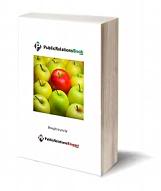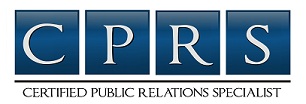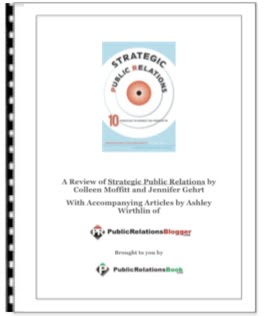________________________________________________________________________
A news release, media release, press release or press statement is a written or recorded communication directed at members of the news media for the purpose of announcing something claimed as having news value. Typically, they are mailed, faxed, or e-mailed to assignment editors at newspapers, magazines, radio stations, television stations, and/or television networks. Commercial press-release distribution services are also used to distribute news releases.
The use of a news release is common in the field of public relations, the aim of which is to attract favorable media attention to public relations professional's client and/or provide publicity for products or events marketed by those clients. A news release provides reporters with the basics they need to develop a news story. News releases can announce a range of news items such as: scheduled events, personal promotions, awards, news products and services, sales, accomplishments, etc. They are often used in generating a feature story or are sent for the purpose of announcing news conferences, upcoming events or change in corporation.
Elements
While there are several types of press releases (such as the general news release, event release, product press release and, more recently, the social media release), press releases very often have several traits of their structure in common. This helps journalists separate press releases from other PR communication methods, such as pitch letters or media advisories. Some of these common structural elements include:
Headline — used to grab the attention of journalists and briefly summarize the news.
Dateline — contains the release date and usually the originating city of the press release.
Introduction — first paragraph in a press release, that generally gives basic answers to the questions of who, what, when, where and why.
Body — further explanation, statistics, background, or other details relevant to the news.
Boilerplate — generally a short "about" section, providing independent background on the issuing company, organization, or individual.
Close — in North America, traditionally the symbol "-30-" appears after the boilerplate or body and before the media contact information, indicating to media that the release is ending. A more modern equivalent has been the "###" symbol. In other countries, other means of indicating the end of the release may be used, such as the text "ends".
Media Contact Information — name, phone number, email address, mailing address, or other contact information for the PR or other media relations contact person.
TV news viewers can often detect the use of VNRs within television newscasts; for example, many movie-star "interviews" are actually VNRs, taped on a set which is located at the movie studio and decorated with the movie's logo. Another frequent example of VNRs masquerading as news footage is videotapes of particular medical "breakthroughs," that are really produced and distributed by pharmaceutical companies for the purpose of selling new medicines.
Video News Releases can be in the form of full blown productions costing tens of thousands or even hundreds of thousands. They can also be in the TV news format, or even produced for the web.
Recently, many broadcast news outlets have discouraged the use of VNRs. Many stations, citing an already poor public perception, want to increase their credibility. Public relations companies are having a tougher time getting their pre-edited video aired.
VNRs can be turned into podcasts then posted onto newswires. Further to this, a story can be kept running longer by engaging "community websites", which are monitored and commented on by many journalists and features writers.
However, it is very hard to enforce embargoes on journalists, as there is constant pressure by editors to be first to a story. It is unlikely that a PR agency will blacklist a form of media, as other clients may want to be featured in this publication. This problem is sometimes overcome by controlling the timing of a release via email rather than relying on the journalist to do so.
What is a Press Release? | Brief Overview
________________________________________
A news release, media release, press release or press statement is a written or recorded communication directed at members of the news media for the purpose of announcing something claimed as having news value. Typically, they are mailed, faxed, or e-mailed to assignment editors at newspapers, magazines, radio stations, television stations, and/or television networks. Commercial press-release distribution services are also used to distribute news releases.The use of a news release is common in the field of public relations, the aim of which is to attract favorable media attention to public relations professional's client and/or provide publicity for products or events marketed by those clients. A news release provides reporters with the basics they need to develop a news story. News releases can announce a range of news items such as: scheduled events, personal promotions, awards, news products and services, sales, accomplishments, etc. They are often used in generating a feature story or are sent for the purpose of announcing news conferences, upcoming events or change in corporation.
A media release is like a short newspaper article that one may send to different media outlets in order to gain interest in a writer’s mind so that a story will be published about the organization in which one works for or the product which they are trying to promote. The persons reading the media release will be looking for stories that will interest their readers, viewers and listeners. An effective media release tells a story that will interest a number of people. Media releases need to be about the story and just enough relevant information for the story to work. The release isn’t the place to list all the benefits of the business.
A press release is different from a news article. A news article is a compilation of facts developed by journalists published in the news media, whereas a press release is designed to be sent to journalists in order to encourage them to develop articles on a subject. A press release is generally biased towards the objectives of the author. A press release is written in order to highlight an important event, program, or piece of information by an organization that succinctly describes the who, what, where, when, why and how of the story.
A press statement is information supplied to reporters. This is an official statement or account of a news story that is specially prepared and issued to newspapers and other news media for them to make known to the public.
Origins
One anecdote on an origin of modern press releases is about an incident in 1906 involving Ivy Lee, who is often referred to as the first real public relations practitioner. At that time, Lee's agency was working with the Pennsylvania Railroad, which had just fallen victim to a tragic accident. Ivy Lee convinced the company to issue the first press release to journalists, before other versions of the story, or suppositions, could be spread among them and reported. He used a press release, in addition to inviting journalists and photographers to the scene and providing their transportation there, as a means of fostering open communication with the media.
Origins
One anecdote on an origin of modern press releases is about an incident in 1906 involving Ivy Lee, who is often referred to as the first real public relations practitioner. At that time, Lee's agency was working with the Pennsylvania Railroad, which had just fallen victim to a tragic accident. Ivy Lee convinced the company to issue the first press release to journalists, before other versions of the story, or suppositions, could be spread among them and reported. He used a press release, in addition to inviting journalists and photographers to the scene and providing their transportation there, as a means of fostering open communication with the media.
Elements
While there are several types of press releases (such as the general news release, event release, product press release and, more recently, the social media release), press releases very often have several traits of their structure in common. This helps journalists separate press releases from other PR communication methods, such as pitch letters or media advisories. Some of these common structural elements include:
Headline — used to grab the attention of journalists and briefly summarize the news.
Dateline — contains the release date and usually the originating city of the press release.
Introduction — first paragraph in a press release, that generally gives basic answers to the questions of who, what, when, where and why.
Body — further explanation, statistics, background, or other details relevant to the news.
Boilerplate — generally a short "about" section, providing independent background on the issuing company, organization, or individual.
Close — in North America, traditionally the symbol "-30-" appears after the boilerplate or body and before the media contact information, indicating to media that the release is ending. A more modern equivalent has been the "###" symbol. In other countries, other means of indicating the end of the release may be used, such as the text "ends".
Media Contact Information — name, phone number, email address, mailing address, or other contact information for the PR or other media relations contact person.
Video news releases
Some public relations firms send out video news releases (VNRs) which are pre-taped video programs that can be aired intact by TV stations. Often, the VNRs are aired without the stations' identifying or attributing them as such.
Some public relations firms send out video news releases (VNRs) which are pre-taped video programs that can be aired intact by TV stations. Often, the VNRs are aired without the stations' identifying or attributing them as such.
TV news viewers can often detect the use of VNRs within television newscasts; for example, many movie-star "interviews" are actually VNRs, taped on a set which is located at the movie studio and decorated with the movie's logo. Another frequent example of VNRs masquerading as news footage is videotapes of particular medical "breakthroughs," that are really produced and distributed by pharmaceutical companies for the purpose of selling new medicines.
Video News Releases can be in the form of full blown productions costing tens of thousands or even hundreds of thousands. They can also be in the TV news format, or even produced for the web.
Recently, many broadcast news outlets have discouraged the use of VNRs. Many stations, citing an already poor public perception, want to increase their credibility. Public relations companies are having a tougher time getting their pre-edited video aired.
VNRs can be turned into podcasts then posted onto newswires. Further to this, a story can be kept running longer by engaging "community websites", which are monitored and commented on by many journalists and features writers.
Criticism
News releases have been a large source of criticism against various types of journalists, who sometimes rely on them heavily. Some people[who?] criticize writers for creating articles in this way, contending that it constitutes free advertising for the company on whose behalf the news release was issued, especially if it is not contrasted with criticism of that company or product in the same article. On the other hand, few[who?] dispute that news releases remain a valuable way for media to be made aware of new products and services, and recent and upcoming events of interest.
News releases have been a large source of criticism against various types of journalists, who sometimes rely on them heavily. Some people[who?] criticize writers for creating articles in this way, contending that it constitutes free advertising for the company on whose behalf the news release was issued, especially if it is not contrasted with criticism of that company or product in the same article. On the other hand, few[who?] dispute that news releases remain a valuable way for media to be made aware of new products and services, and recent and upcoming events of interest.
Embargoed news release
Sometimes a news release is embargoed — that is, news organizations are requested not to report the story until a specified time. For example, news organizations usually receive a copy of presidential speeches several hours in advance. In such cases, the news organizations generally do not break the embargo. If they do, the agency that sent the release may blacklist them. A blacklisted news organization will not receive any more embargoed releases, or possibly any releases at all.
Sometimes a news release is embargoed — that is, news organizations are requested not to report the story until a specified time. For example, news organizations usually receive a copy of presidential speeches several hours in advance. In such cases, the news organizations generally do not break the embargo. If they do, the agency that sent the release may blacklist them. A blacklisted news organization will not receive any more embargoed releases, or possibly any releases at all.
However, it is very hard to enforce embargoes on journalists, as there is constant pressure by editors to be first to a story. It is unlikely that a PR agency will blacklist a form of media, as other clients may want to be featured in this publication. This problem is sometimes overcome by controlling the timing of a release via email rather than relying on the journalist to do so.
Article Source.
Popular choices
- Non Gamstop Casino
- Mejores Salas De Póker
- Non Gamstop Casinos
- Siti Casino Online Non Aams
- Migliori Siti Casino Online
- UK Online Casinos Not On Gamstop
- Non Gamstop Casino Sites UK
- Non Gamstop Casino Sites UK
- UK Casino Not On Gamstop
- Casinos Not On Gamstop
- Online Casino
- オンラインカジノ
- UK Casino Not On Gamstop
- UK Casino Not On Gamstop
- Reputable Non Gamstop Casinos
- Casinos Not On Gamstop
- Best Non Gamstop Casinos
- Non Gamstop Casino
- Casinos Not On Gamstop
- Slots Not On Gamstop
- Non Gamstop Casino
- Casino Non Aams
- Casinos Not On Gamstop
- Betting Sites Not On Gamstop
- Casino Online Italia
Subscribe to:
Post Comments (Atom)






Comments (0)
Post a Comment